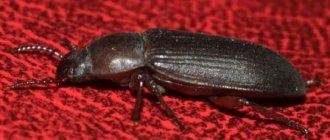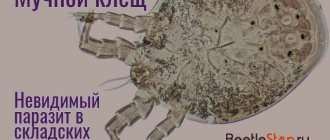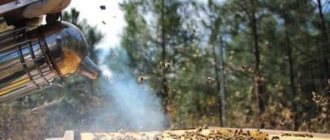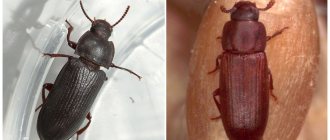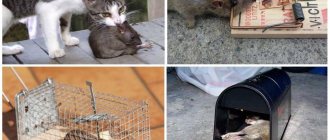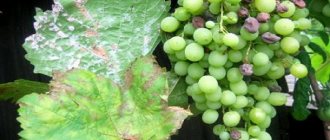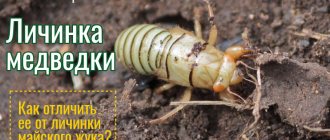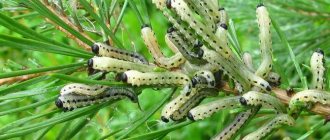Many insects do not mind feasting on food supplies that are located in the kitchen or other storage areas. The mealworm is also found here. Bulk food products are spoiled by both adults and larvae. These insects disguise themselves as furniture or food, so they are not easy to detect, especially if there are still very few of them.
The flour beetle can appear in any housewife, regardless of sanitary conditions, compared to other types of pests. Therefore, any housewife should know how to get rid of these insects and what measures should be taken to prevent the flour beetle from appearing in the apartment, among food products.
Flour beetle - what a bug looks like (photo)
Flour beetles are insects of the darkling beetle family, their size does not exceed 3-5.5 mm (with the exception of the large beetle). The beetles have an oblong body, the color of the cover is reddish-brown. Distributed in all regions of our country.
This is what representatives of this family look like
Bugs reproduce very quickly. Just one female lays up to one thousand eggs in her life, and this is a very numerous offspring; a little time passes and the pests form an entire colony. If the conditions for the development and life of the beetle are normal, that is, there is a lot of food and optimal humidity, the larva pupates in 20 days, and under unfavorable environmental factors - up to four months. Bugs generally cannot tolerate low temperatures; even the larvae die at -7 degrees and below.
The following types of flour beetle are most often found in apartments.
- The large mealworm is an insect of the order Coleoptera with complete metamorphosis. Adults reach 1.8 cm in length, the body of the beetle is flat, black-brown above, with a red tint below.
The larva is naked, cylindrical, 2.5 cm long, brownish-yellow in color. The larvae do not have eyes, but they have legs with claws; on the rear segment of the body there are two hooks and small warts, with the help of which they push off from surfaces. The mealworm pupa is white, with brownish projections, and there are two spines on the posterior ring.
- The small mealworm reaches 3.6 mm in length. Its flat body is brown with a red tint and has wings, but the beetle does not fly. The beetle has glands that secrete a very odorous liquid to repel enemies.
The larva of the small mealworm is flattened. Its yellow body, 6-7 mm, is covered with short hairs, and its head is flat. After 5-12 molts, it turns into a pupa.
The pupa is shiny, light yellow, with two tubercles located at the end of the abdomen. At a temperature of 23-25 degrees, the entire development cycle lasts 47-56 days. At room temperature and a relative humidity of 70%, the beetles live for just over six months.
- The small black beetle grows up to 5.5 mm. The body is matte-shiny, black or dark brown, the abdomen and legs are light. The beetle is similar to the small beetle, only it is larger in size.
The larvae are also similar, flat with hairs, only in the black beetle the developed larvae are large (12 mm) light brown, development lasts a long time, about one year.
They pupate without a cocoon, in caves. The beetles appear at the end of summer and are predominantly nocturnal.
The larvae of all types of mealworms are called “mealworms”; they move easily in the thickness of food and on any surfaces, and are able to overwinter at temperatures around zero.
Types of pests
The following types of household pests are known today:
Bread grinder
It is found in bakeries, where they forget about basic hygiene and disinfection methods and, perfectly adapting to almost any environment, ends up with the products in homes. The size of the insect is 3 millimeters in length, it flies perfectly, which allows it to quickly move from place to place and, because of this, it is more difficult to eliminate. Usually he eats bread, but he can also enjoy rice, buckwheat, tea, animal food and even an old book.
Mucoed
Prefers flour, cereals and grains. It is very voracious, despite its tiny size - 2 millimeters in length. The flour beetle larva is even smaller, so it is difficult to notice it right away: black dots found in flour are a sign of the presence of mucoed larvae in it. The beetle is very prolific, producing offspring up to 7 times a year in large quantities. Therefore, in just a couple of months, flour can turn into a breeding ground for these insects. The ideal environment for mucoed is high humidity and warmth.
Flour beetle
This is a small insect up to 4 millimeters long, reddish-brown in color. It multiplies rapidly, and settles not only in flour and cereals, but also in furniture and dishes. Breeding a beetle is very difficult, as it is unpretentious to living conditions and is hardy.
food moth
She looks like a simple moth. The length of its body does not exceed 1 centimeter. It is characterized by high fertility (over five hundred eggs in two weeks, from which caterpillars hatch). The moth devours cereal reserves at high speed. Her ability to hide, fly and disguise herself as dark objects makes her virtually invulnerable.
Weevils
They can appear in literally all products: cereals, flour, bread, dried fruits, fruits and vegetables. They look like small bugs, about 5 millimeters in size with a long proboscis. Weevils can fly, changing their location depending on changes in environmental conditions, and also easily climb walls. The pest produces offspring up to 6 times a year. They settle everywhere: remote corners of the kitchen cabinet, containers of cereals, bed linen, baseboards, cracks.
Habitats of the flour beetle
Small Khrushchak prefers to live in warehouses, granaries, pasta factories, but is also found in apartments. Females penetrate into the smallest cracks in boxes, bags or bags of food and even into cracks in walls, breeding under wallpaper. Plastic, paper or fabric are chewed by harmful insects. Due to the fact that the eggs are covered with sticky mucus, they stick firmly to any surface.
For housing, they choose pantries, kitchen drawers (scattered cereal), and places where there is a lot of dust, such as baseboards. This does not mean that pests sit quietly in the products and do not crawl out anywhere; if their numbers are large, they feel like full-fledged masters in the apartment and crawl anywhere, only smooth vertical surfaces are beyond their power. For tormentors, damp, stale foods are preferred, and if there are such places in the house, perhaps you store pasta or cereal on the balcony, in a closet where there is no ventilation, most likely the place where bugs spread is located there.
The large beetle needs high humidity to develop, while the small one lives happily in dry apartments with heating.
INTRODUCTION
Coleoptera (Coleoptera) constitute one of about 30 orders of the insect class (Insecta). In many respects, the order Coleoptera stands out clearly from other insects and is therefore a favorite object of interest and study among both professional scientists and nature lovers. [45]
Coleoptera are unique animals due to the fact that they can adapt to completely different living conditions, they can be found in all latitudes, in different habitats, their nutrition is based on any organic substances, many species reach high numbers. Therefore, we can say about the representatives of this order that they are omnipresent. For example, they can be found on the sea coast, in the summer high in the mountains at the very edge of the eternal snow. The only place where they have not yet been found is Antarctica, but some species are known to live on the sub-Antarctic islands.
Coleoptera are diverse in shape, color, size, sculpture of outer covers, the presence of various outgrowths, etc., they are a source of inspiration for people who create beauty, these are artists, designers of ornaments and patterns, sculptors, even writers and composers.
Coleoptera can be helpers and pests in such industries as agriculture, forestry, storage of objects and products made of fur, fabrics, leather, wood, and food.
But we must not forget about other species that experience inconvenience due to the fact that humans interfere with their habitats, engaging in economic activities and reducing the numbers of certain species. It gets to the point that some species completely disappear from the Earth.
Regarding ecology, it can be noted that some types of beetles respond very well to the ecological state of the environment, so they can be used as indicators of pollution that humans introduce into the environment.
That is why it is necessary to understand that knowledge about beetles is necessary not only for coleopterologists, but also for plant conservationists, foresters, agronomists, food industry workers, reserve staff, museum specialists, ecologists, and many others.
In this regard, it is necessary to pay attention to the study of Coleoptera in a school biology course, as an extremely necessary element of biological education, because The knowledge gained in biology lessons forms the basis for understanding environmental problems and finding solutions to them.
In a school biology course, the class Insects is usually considered using the example of representatives of this class that are more familiar to any person: the butterfly, the May beetle, the bee, and the ant. But the problem is that each of these insects has many differences. We propose to study insects using the example of mealy beetle, because you can not only see it in a biology lesson, but also grow it yourself and trace its entire life cycle, noting the features of its structure, nutrition, development, habitat, etc.
Before carrying out this work, certain goals and objectives were set.
- Goal: to develop a methodology for studying the class Insects using the example of the large mealworm.
Tasks:
- Conduct a theoretical analysis of the biology of the mealy beetle.
- To identify methodological conditions conducive to the study of the class Insects using the example of the large mealworm in practical activities.
- To study the results of using the applied methodology in the process of teaching children with SLD and prove its effectiveness.
Where does flour beetle come from in an apartment?
The main way for a beetle to enter an apartment is to purchase products that have already been contaminated. Surely you have had a situation where, after buying groceries, you open the package, and there are larvae or bugs swarming around there. Infection occurs in warehouses and storage facilities when storage rules are not followed.
The large beetlefish feels good in the attic with pigeons, lives and reproduces, as it can feed on animal substances, such as the remains of feathers. Once in a multi-storey building with the help of birds, where the beetle cannot find a suitable place for breeding and food, it enters the apartments through the ventilation shafts.
Do-it-yourself pest control: expert comments
- Firstly, the use of insecticides by inexperienced users and violation of the technology for their use can result in adverse consequences for the fighters themselves.
- Secondly, when purchasing chemicals yourself, you can never be sure that this product is not a fake or that the bugs in the house have not developed immunity to it.
- Thirdly, when treating a room without the use of specialized fog generators, the particles of the sprayed product remain large enough and will not be able to get into microcracks and crevices.
- Fourthly, obtaining a result may require more than one processing session, and this is time, which, as we know, is priceless.
- Fifthly, even if after treatment the beetles disappear from the house, who can guarantee that they will not bother you again? After all, by choosing self-treatment, you refuse both barrier protection and professional advice regarding prevention.
What harm does the flour beetle cause?
Flour beetles are practically omnivorous and damage many products - flour, bran, semolina, and some semi-finished flour products. Khrushchak do not disdain dried fruits, chocolate, buckwheat, glue, nylon and knitwear. Foods infected with tormentor become completely unfit for consumption. While the larvae can be removed by sifting, the eggs are so small that they pass through the sieve and are difficult to detect, since they are covered with particles of the product. Pests contaminate groceries with the skins of larvae and excrement, and imbue them with their pungent odor.
The larvae are capable of damaging laundry; there are reliable facts when the mealworm larva gnawed through burlap and tarpaulin. Flour pests even bother pets, and they only cause disgust in people.
More than one generation of flour beetles develops over the course of a year, so you need to fight them as soon as possible.
CONTENT
- INTRODUCTION
- CHAPTER I. LITERATURE REVIEW
- 1.1 History of the study of mealy beetle
- 1.2 Biology of mealy beetle and its most common species
- 1.3 Species diversity of mealy beetle
- CHAPTER II. EXPERIMENTAL PART
- CHAPTER III. USING RESEARCH RESULTS IN TEACHING SCHOOL BIOLOGY COURSE IN SECONDARY SCHOOL
- 3.1 Analysis of biology curricula and textbooks
- 3.2 Features of teaching biology to children with disabilities, in particular to children suffering from severe speech impairment (SSD)
- 3.3 Methodological development for studying the class Insects using the example of the large mealworm
- CONCLUSION
- LIST OF REFERENCES USED
- APPLICATION
How to get rid of flour beetle
To get rid of pests quickly and effectively, you need to act decisively and throw away the contaminated products, and even better, even the flour, cereals and pasta that were in the same drawer or cupboard with the bugs. As we have already said, sifting will not help, and sorting through the grain is an ineffective and labor-intensive process. You can blow air and rinse the cereal with water, but all the eggs will still not be destroyed; time will pass, and the tormentors will appear again.
So what to do if there is a flour bug in the kitchen, how to get rid of this scourge? If there is no way out and it is not possible to throw away supplies, freeze the food, place it in the freezer for a day or more, during which time the insects will die. Spread the cereal onto a baking sheet and place in the oven, set the temperature to the highest possible temperature and leave for an hour. But remember that flour cannot be subjected to such actions.
Let's consider step by step what to do if there is a mealworm in the house.
- Take all bulk products to the trash. Sweep up any spilled grains and flour. There is no need to regret throwing away supplies, there is no shortage now, but you still can’t eat them.
- Check all cabinets and shelves, wash and air them. To wash, use a vinegar solution or add baking soda. Pests are repelled by these substances. For a liter of water you need to take one tablespoon of soda. Wash the boxes and jars with soap and scald with boiling water.
- Treat the window sill, drawers, and cabinet joints with the same vinegar essence.
- If the infection is significant, fill the cabinet shelves with pyrethrum and repeat the procedure after a week. Poisoned baits made of flour, powdered sugar and borax in equal parts are also common.
- Spray floors and baseboards with an insecticide, such as Dichlorvos. If the flour beetle has spread throughout the apartment, use Phenax or Riapan powder, 15 grams of the product per square meter.
- Buy grocery storage jars with tight-fitting lids.
Lifehack
The main way to prevent insects from outside from approaching bulk products is through sealed storage containers. They are not always at hand, but you can quickly organize safe conditions for storing cereals directly in a factory bag. To do this, you will need a neck with a cap cut off from a plastic bottle.
The opened corner of the bag (provided that the rest of the bag is intact) is pulled through the neck and the edges of the bag are folded outward. A cork is screwed onto the neck over the cellophane - the express container is ready. Of course, it won’t save you from voracious larvae, but adult beetles won’t crawl in. Less temptation means fewer pests.
Bugs in flour and cereals are an extremely unpleasant phenomenon, but they can appear in almost any kitchen. This is not evidence that the housewife does not keep an eye on the food in the cupboard, because cereals are often stored for a short period of time. Small pests enter the house from store shelves, from warehouses where large quantities of cereals, flour, dried fruits or nuts are stored.
Such bugs pose no danger to humans, but the same cannot be said about the family budget. The value of contaminated products is reduced to almost zero, since insects eat the nutritious core of the grains.
Prevention measures
- Clean out your kitchen cabinets regularly and keep them clean.
- From time to time, wipe down your cabinet shelves with baking soda and vinegar.
- Place a few cloves of garlic in grocery bags to repel insects.
- Lavender, lemon and bay leaf have a repellent effect. Place pieces of cotton wool soaked in lavender oil or dry sprigs of the plant on the shelves of the cabinets.
- Do not buy a lot of food for future use or store it on the balcony in winter and in the refrigerator in summer. If this is not possible, at least in hermetically sealed jars.
- Check stocks for pests, seeds and medicinal herbs.
The most effective and reliable way to prevent bugs from appearing in your apartment is to clean regularly and store food properly, then problems with these insects will bypass you.
How harmful and dangerous is it for humans?
The flour beetle does not pose a mortal danger to humans, but as a result of its vital activity it makes all groceries in the house unusable. This insect leaves its excrement in the products, and there are also remnants of skins left in them after the molting of flour beetle larvae.
Contaminated product
Spoiled products can be identified by the unpleasant specific odor that the pest emits during its life. And the flour in which the Khrushchak infested becomes lumpy. In this case, all spoiled products must be disposed of.
